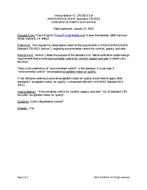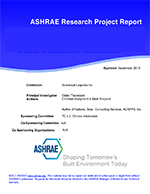A great deal of research has been conducted in the past for the purpose of determining the performance of individual parts of duct systems. Design procedures utilizing the results of these studies have been developed and are in general usage. Moreover, these design procedures have been automated by means of digital computers which can also be used to quickly perform a complete analysis of the flow through a duct system.
However, in spite of the wide availability of digital computer facilities and their widespread usage in this area, they are not available to all duct systems designers. Consequently, many duct systems still are being designed today without their beaefit. Under these conditions, the design of a duct system is further complicated today because of the growing use of zoned systems.
These considerations indicated that there is a place for some other means of analyzing duct systems. A project, sponsored by the Air Conditioning and Refrigeration Institute, was initiated to explore the possible approaches. It appeared that an analog device would satisfy many of the conditions imposed by the above considerations. In order to be practical, such a device would have to be easy to operate and inexpensive to build. It should be designed so that the individual duct components could be identified, and a layout should be devised so that the analog representation is readily correlated with the duct system. Such a device has been designed and constructed at the University of Illinois at UrbanaChampaign. It is described in detail in this paper.
Citation: ASHRAE Transactions, Volume 76, Part 2, Kansas City, MO
Product Details
- Published:
- 1970
- Number of Pages:
- 6
- File Size:
- 1 file , 460 KB
- Product Code(s):
- D-KA-2142


